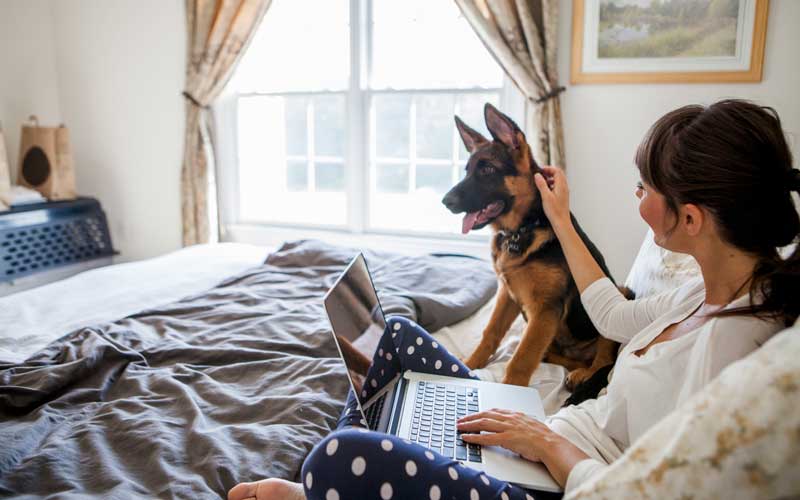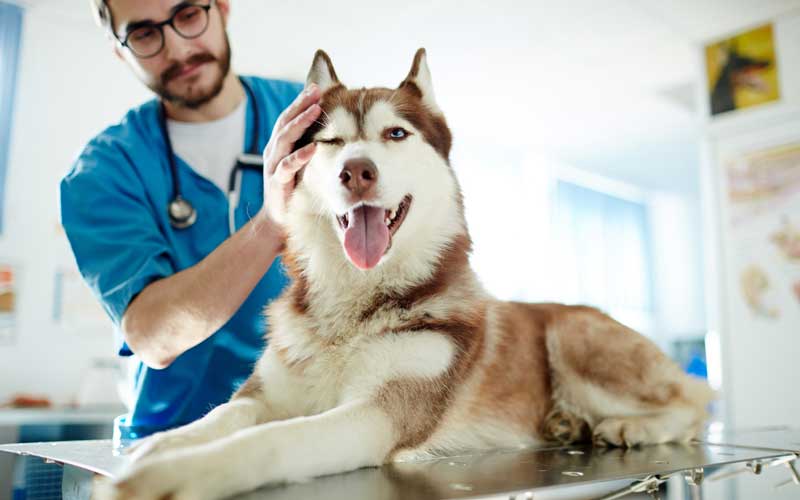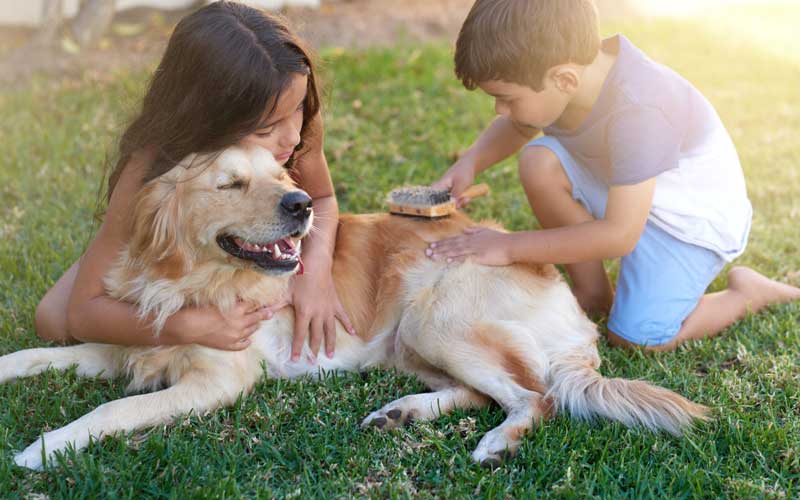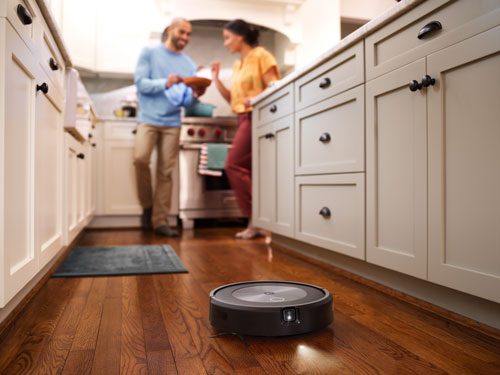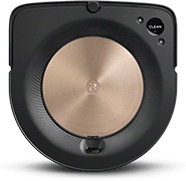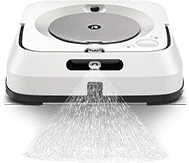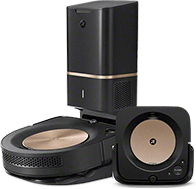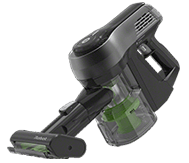7 Tips for Surviving Dog Shedding Season
You may often be wondering, “WHY is my dog shedding SO MUCH?” It seems like you’re always picking dog fur out of your couch, from under your tv stand, and you may even find a few strays in your beard (or your husband’s) every now and then. Well, there’s an actual season for dog shedding.
During spring and fall, your dog’s “coat” sheds a heck of a lot more, sometimes aggravating or causing your allergies and most certainly causing a mess. Like using up a whole lint roller in a day kind of mess.
How do you stop it? In this article, we’ll run through our top seven tips for fighting year-round pet hair, but most importantly during dog shedding season.
When Is Shedding Season For Dogs, Exactly?
There are technically two dog shedding seasons. There’s the intro-to-summer season and the intro-to-fall season. Typically a total of three months transitioning into each season. And their shedding cycle can vary depending on the weather in your area.
During the winter, dogs obviously need more fur to keep them warm. Then, of course, they lose a lot of that hair before summer kicks in so they’re a little cooler during the hottest seasons.
If that were just the case, you’d think they wouldn’t shed after summer. They’d just keep all that hair and grow more to keep them warm come winter.
But actually, their hair (and hair growth) is different after each shedding.
About Winter Coats, Summer Coats, Outer Coats, Undercoats – All The Coats!
For winter, many dog breeds actually grow a top winter coat and an undercoat. During the summer, they tend to only carry a summer coat.
The top coat is coarse and designed to act as an armor for wet and cold, protecting the softer, warmer undercoat.
They obviously need to lose that undercoat during summer, hence such dramatic changes in their fur during each season.
Dogs that carry both coats majority of the time (like huskies) have what’s called a “double-coat”. It’ll generally make them appear fluffier- and if that’s your dog, anticipate more grooming in your future.
Now you might be thinking about those fluffy doggies and wondering: does long hair mean more shedding?
It might seem like they do, but no, long-haired dogs do NOT shed more than short-haired dogs (but dogs with a double-coat can). Sure, you’ll see more of their hair during the shedding season, but that doesn’t mean they shed more than any other dog.
Seasonal Shedding Dog Breeds
A dog’s coat may be a nuisance in a dog owner’s home, but it’s vital to your dog’s survival. They need their fur to protect them from the sun and regulate their temperature, and they also use it as a sensory device (cool, right?)
That said, if you have allergies and you’re looking for a dog that doesn’t shed as much (because you still love them and want ’em), consider avoiding the following breeds.
Top 20 shedding dogs:
- German Shepherds
- Collies
- Golden Retrievers
- Labrador Retrievers
- Siberian Huskies (Really, all Huskies)
- Burnese Mountain Dogs
- Great Pyrenese
- Shiba Inu
- Alaskan Malamute
- Australian Shepherd
- Shetland Sheepdog
- Newfoundland
- Rottweiler
- Welsh Corgi
- Pomeranian
- Akita
- American Eskimo
- Chow Chow
- Saint Bernard
- Basset Hound
Is your pet leaving its fur all over?
We got you! These pet hair removal tools work like a charm.
Tip #1: Be Prepared
One of the best ways to reduce the amount of dog hair in your house is to prevent as much of it from shedding to begin with.
We all know it’s impossible to completely prevent shedding, but there is a way to cut down the amount that reaches your surfaces and enters your air.
A couple of dog shedding remedies to try:
- Give your dog a bath regularly (or send them to a professional groomer), with anti-shedding shampoo.
- Regular brushing helps a ton (and not just with tangles). Brush your dog at least once a week. Or daily for those big shedders. This gets up a lot of the loose hair. (It’s usually best to do this outside with a pet hair brush.)
- Give your dog vitamins that help to keep their hair healthy and skin problems at bay (you may want to check with your vet for certain vitamins).
- Use an air purifier to pull dander and pet hair from the air to reduce the amount that lands on surfaces.
Tip #2: Manage Your Expectations
You’re not going to be able to get rid of all the dog hair in your house. While you can reduce shedding, it’s just impossible to stop fully (just like it is for humans).
The only thing you can really do is manage it.
Of course, take the precautions listed in the section above. You can also do things like keeping certain rooms (like closets) closed unless in use to reduce instances of shedding in those rooms.
Just know that you’re not going to be able to keep all of the fur off of your upholstery, rugs and carpets, or from under furniture.
Tip #3: Go to the Vet
Dogs shed. And some breeds shed more than others (big dogs especially). But if you feel as though your dog’s shedding is excessive, you may have to take them to the vet.
So, how do you know your dog is excessively shedding dead hair?
Check for these top signs:
- Red or blotchy skin
- A rash or scabs
- Bald spots
- Sores (especially if they’re bloody)
- An overly thin coat
- Rubbing or itching too much
- Licking more than usual
Excessive shedding? It could be a health issue.
In most cases, dogs shed regularly, and pet parents need not worry. Sometimes they’ll shed a little extra (sometimes due to your dog’s health). Here are a few reasons your dog may be experiencing excessively heavy shedding:
- They may have mange – a skin disease and irritation caused by mites.
- Your dog is scared, nervous, or anxious (just like humans, dogs can have regular and unsparked anxiety). Plus, when they’re nervous, they release epinephrine, which causes shedding.
- They have a fungal or bacterial infection or they’re allergic to their food, something in the air – such as a fragrance, or they can’t tolerate their food.
- They have a health problem with their kidney, adrenal glands, liver, or thyroid.
- If you’re giving them regular medications – such as to reduce shedding- may be damaging them.
- They have a sunburn or some other skin condition.
- They aren’t receiving enough vitamins and minerals from their diet.
Shedding is a dog’s way of sweating, in a way. So if they’re nervous a lot, they’re going to shed more often. If they don’t like going to the vet- most animals don’t- they’ll likely shed more during their visit, which could make it more challenging to determine the cause of all that loose fur.
Tip #4: Re-evaluate Your Doggo’s Diet
Give your dog the right food. Dogs shed more – just like other animals and even humans – when they’re eating a poor diet. They need good healthy proteins in their food.
Not that you should consult with your pet’s veterinarian before changing your doggo’s diet, but basically, food should contain muscle meat or by-products (which is just organ meat) such as hearts, livers, lungs, and kidneys. Dogs also benefit from chicken, turkey, pork, beef, fish, and duck.
Grains and oilseeds (which are soybeans) and other fatty acids and whole grains like corn and wheat provide dogs with protein.
Fatty Acids 101
On the causes of excessive shedding, improper nutrition is one that’s often overlooked. It’s also something you can spot quite easily.
If your dog’s hair isn’t soft, smooth, or looks dull, it could be due to their diet (things like parasites can also dull the look and feel of their hair).
In most cases, it’s a lack of fatty acids. Most people think omega-3s are the solution, and they are, but not alone. Your furry friends need a combination of omega-3 and omega-6, and a range of vitamins and minerals, including:
- methylsulfonylmethane (MSM)
- Vitamins A, B (the whole family), C, D, E, and K
- Choline
Tip #5: Gather Your Shedding Tools
We’ve already mentioned that brushing your dog regularly (preferably daily) can help to reduce shedding, or at least the spread of hair around your house, significantly.
It might be a bit surprising, but there are actually a number of different types of dog brushes, such as:
- Slicker brush: uses rows of wire to both detangle and remove fur.
- Pin brush: still uses wire bristles, but they usually have a plastic or rubber tip for silkier coats.
- Bristle brush: looks more like a regular hair brush, and is best for dogs with short hair.
- Shedding blade: looks a bit like a horseshoe and has small “teeth”, which works best for short-haired dogs.
- Undercoat rake: similar to a pin brush, though the wires are longer and there are fewer of them, so they’re more spread out. It’ll get into the thicker, longer, and heavier types of coats.
Effortlessly maintain a fur-free environment on all of your floors.
Get the Roomba Combo™ j7+ Robot Vacuum and Mop.
Tip #6: Clean Your House
One of the biggest reliefs from pet dander and hair all over your house? Clean the places where the hair gathers most.
Of course, that’s a little easier said than done sometimes. But luckily, there are some great pet hair remover tools and methods for effectively getting rid of hair from all areas of your home.
Earlier we mentioned an air purifier, and that still stands as a great way to preliminarily filter the pet hair and dander from the air circulating in your home.
Other ways to get up all the pet hair in your home (and survive dog shedding season):
- Clothes: keep your closets closed, use pet hair rollers when you do get hair on your clothes, or use a pet hair remover (or dryer sheet) in your washing machine.
- Couch: use a rubber or fabric bed hair brush to remove pet hair from the upholstery (sometimes a pet hair razor works, but to be safe it won’t pull any threads, stick to the rubber or fabric that’ll create static). (Here are 9 more easy ways for getting dog hair off your couch.)
- Carpet: it can be really challenging to get dog hair out of carpets and rugs because of the longer threads, but an effective vacuum cleaner (or robot vacuum) can get up a good portion of it. You’ll usually find that there are still a lot of hairs buried in there. To get those out, use a rubber squeegee or rubber brush on a long handle.
- Hardwood floors: pet hair loss is a bit more noticeable when you have hardwood floors, and you’ll likely feel as though you have to clean them constantly. A decent hard wood vacuum and a regular mopping session can do the trick. If you have a Roomba® robot vacuum, you can simply program it to run all day, or more often during shedding season.
Tip #7: Automate Pet Hair Cleaning
The only surefire way to keep your home consistently clean is to clean constantly. The Roomba j7+ is a smart product that’s a real life saver. It uses a 3-stage cleaning system to get debris and pet hair out of carpets and hard floors.
If you have carpet, your Roomba® robot vacuum will automatically increase suction using its power boost technology to get into those thick threads.
As for pet shedding season, you won’t even notice.
The Roomba j7+ suggests cleaning schedules based on the rhythm of your routine. It will even recommend greater cleaning schedules during allergy and dog shedding season.
Learn more about the Roomba j7+, here.
Stay one step ahead of the mess.
Sync your home with your life.
Get the iRobot® Genius App.

